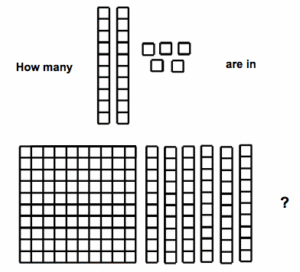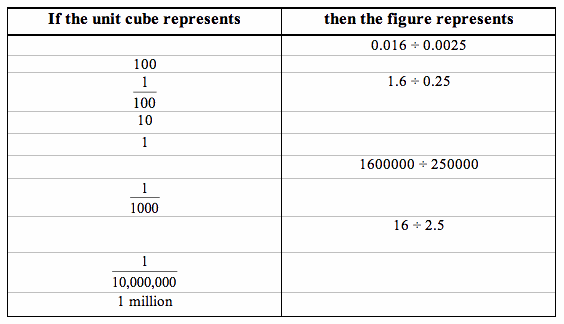Let’s Help Ms. Lee
Ms. Lee asked Jason to use base-10 blocks to represent 16 ÷ 2.5, and asked Caroline to use base 10 blocks to represent 160 ÷ 25. Interestingly, both of them came up with similar reasoning using the same representation below:

Jason said, “Since six of those (indicating a bundle of two rods and five unit cubes) fit into one flat and five rods and the remaining one rod is 2/5 of that (indicating a bundle of two rods and five cubes), 16 ÷ 2.5 is 6 2/5 which is 6.4.”
Caroline said, “Ms. Lee, I used exactly the same base-10 blocks as Jason to solve 160 ÷ 25, and got exactly the same answer 6.4 as Jason because there were six 25s in 150 and the remaining part was 10/25 which is 0.4.”
Ms. Lee was confused by their interpretation. Let’s help her!
- Are the interpretations of Jason and Caroline correct? If so, how can the same figure be interpreted as both and 16 ÷ 2.5 and 160 ÷ 25?
- What other division problems can the same figure illustrate? Fill in the blank spaces of the following table using the same base 10 figure that Caroline and Jason used.

Adapted from: Beckmann, S. (2005). Class activities to accompany mathematics for elementary teachers: Pearson Education.
